Why Content is Your Most Valuable Digital Asset (and How to Get the Most From It)
Sit down with a marketing professional and ask them to explain the mechanics of brand building online, and you could well be in for a very long answer.
That’s because digital marketing is a complex and sophisticated business. To get it right – by which we usually mean, help a business to make money through any number of digital activities – you have to know your stuff. The skill sets it covers span the creative arts, cutting-edge technological know-how and rigorous application of evidence-based scientific method.
That all said, if you really want to distil digital marketing down into its bare essence, it can be summed up in just one word – traffic. Online business depends fundamentally on people visiting your website. High traffic doesn’t necessarily lead to high sales, of course. But it is a necessary condition of high sales.
How do you ensure traffic to your website is consistently high? That’s where content comes in. All of the ‘stuff’, be it in the form of text, images, video, audio etc, that populates your website forms the basis of SEO activity. That’s what makes your brand visible at the top of organic search rankings. Content is also the material you share on social media, allowing you to start conversations, engage with your audiences and build brand awareness.
Blogs, white papers and reports that attract visitors to your site purely because they are an interesting read; how-to videos and written FAQs that help customers help themselves on your site; product pages and promotional emails that present purchasing opportunities – it’s all content. With nothing on your website, your social media, your newsletters, you have no digital brand. To a large extent, your content is your brand.
Statistics back up the argument that content is now a brands’ most valuable asset. It has been calculated that content marketing generates three times as many leads as traditional outbound marketing (e.g. advertising) yet costs 62% less. 70% of consumers would rather learn about a company or get information about products and services from blogs and articles than adverts. A quarter of internet users actively block digital ads on their devices.
Content is having an equally big impact in B2B channels, too. Nearly half (47%) of B2B buyers now say they engage with three to five pieces of content from vendors before engaging with a sales rep. Just under three quarters say they review blogs as part of their buying journey.
These all underline the importance of content for the modern business. Get content marketing right, and you will not only see more traffic through your online channels, you will also get better quality leads, more conversions and higher levels of retention.
Yet simply producing and posting content in its various forms does not automatically guarantee success. The value of content is directly linked to its quality, its relevance to its intended audience, and how effectively it is distributed.
Here are some ideas for getting more from your content marketing.

Focus on multimedia, multichannel strategies
There’s a lot of discussion about the types of content businesses should focus on. Video inevitably gets lots of attention, on the back of stats like the fact that 87% of video marketers claim that video content has increased traffic to their websites, and 80% say that it has boosted sales.
Video is great, and has now overtaken blogging and infographics as the most popular type of content created for marketing purposes. But it would be unwise for any brand to pursue a video-only content strategy – or rely on just one type of content full stop.
When you look around the internet, you see a rich blend of content types. It’s hard to find any web page that doesn’t contain text and images, both of which can be moulded into many different forms – blogs, ebooks, case studies, product descriptions, brand slogans; graphics, infographics, memes, photography. And that list barely scratches the surface.
This flexibility means that content creators never have to restrict themselves to just one medium. If you are writing a blog or a thought leadership article or a white paper, it increasingly makes sense to enrich it with charts, diagrams, GIF animations, short videos or audio clips.
Why? Because as well as providing audiences with engaging variety and a choice of how they consume the content, Google is reportedly focusing its search algorithms so they crawl images, video and audio the way they always have done text. Looking forward, multimedia content looks like it will be a key part of SEO strategies.
Multimedia content also provides flexibility in another way. Most businesses now distribute content and indeed run their entire business across multiple digital channels. It isn’t just the branded website anymore. It’s social media accounts, mobile apps, email marketing, third-party marketplaces etc. Multimedia content gives you more options to use what works across different channels.

Use content to build a consistent brand identity
Another reason why having a well-thought-out multichannel content strategy is so important is to ensure there is consistency in everything you put out there. Back in the pre-digital days of branding, every marketer was taught the importance of brand voice and brand identity. The easier it is to associate marketing output with your brand through consistent use of slogans, colour schemes, iconography, designs etc, the more familiar and recognisable you become as a brand.
For a long time in digital marketing, this has been forgotten. A lot of that is down to the rapid evolution of multi-platform digital channels. As websites, social media, apps etc have all arrived at different times, it has become commonplace for different teams to take charge of them. It is easy for these teams to operate in their own silos, with little strategic integration in content, and therefore little consistency.
This is confusing for customers. Whether it is different aesthetics, different tone of voice, or different messages, getting a slightly different experience when they engage with your content across different channels leaves people wondering who you really are as a brand. Strategic, aligned use of content helps to make your brand more recognizable, it builds deeper trust and supports longer-term relationships with customers.



